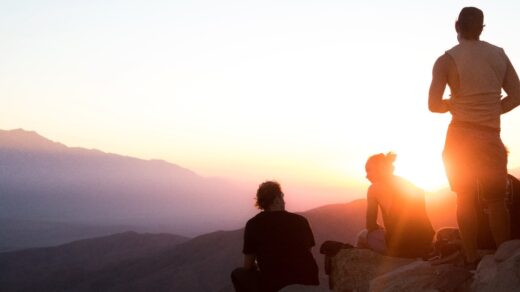As a wilderness-based therapy, Second Nature Utah provides teens and young adults with safe, effective therapeutic modalities to treat many common disorders teens today may face.
From self-esteem to substance abuse, on-trail intensives combined with nature-based activities and counseling help these young people on their journey to overcome addiction to become responsible adults. Below, Kate Smith and Patrick Burns recount their experiences at the facility.
Kate Smith was a teenager with a history of truancy and petty theft when she passed out at school due to her struggle with substance abuse. Her school contacted police, and Kate ended up in the emergency room for the fifth time that year, with another arrest on her record.
“We were going to have to do something dramatic,” said Kate’s mom. Her father added, “It was clear that treatment we previously sought was not working.”
That “something dramatic” was three months of Second Nature Wilderness Family Therapy. The treatment and therapy that Kate received there was able to give Kate and her family the help and healing they needed.
Patrick Burns is another success story for the program. At the time of Patrick’s tipping point, he was only 14 years old. Burns acknowledges that the wilderness therapy modalities saved his life.
And he’s not wrong. There is clear, empirical evidence that wilderness therapy works, and can be the saving grace that many distressed teens unknowingly need.
Wilderness Therapy at a Glance
Wilderness therapy is a form of residential treatment that provides intensive, specialized care to young people—in a nature-based outdoor setting.
There are more than a hundred wilderness therapy programs across the US. Between them they serve over 10,000 clients—typically between the ages of 13 and 18—each year.
Nature-based therapy “fills the gap between the various other therapeutic modalities available to young people that need additional support”.
This gap-filler is sometimes used in conjunction with, or replacement of additional therapeutic techniques such as boarding schools and residential treatment centers. Multiple family members have expressed gratitude and appreciation for what Second Nature Utah has done for their siblings, children, and families as a whole.
What Wilderness Therapy Can Treat
Wilderness Therapy is often used to help young people cope with the increasing pressures they feel from society, as well as ongoing problematic issues like low self-esteem, recklessness, peer pressure, and behavioral challenges.
Due to its varied modality structures, it is also effectively used to help young people deal with:
- Anxiety
- Trauma
- Depression
- Eating disorders
- ADD and OCD
- Substance abuse
What Wilderness Therapy Involves
Second Nature’s therapeutic modalities incorporate outdoor experiences, on-trail intensives as well as traditional therapy sessions and parent coaching.
The program is able to provide an encouraging and understanding environment for self-discovery. While building relationships, learning one’s capacity for strength and self-reliance during on-trail intensives help to build a young person’s self-worth and self-esteem.
Clients are placed in an environment where they can learn skills, work through challenges, enable growth and increase self-esteem.
Programs like these can also offer families a way to rebuild after trauma developing stronger bonds.
Modalities Used
Techniques will vary depending on the focus of treatment. However, the more common approaches include:
- On-trail intensives
- Hiking
- Primitive Fire making
- Group and individual therapy session with a licensed mental health counselor
- Parent programs
- Conference calls

Effectiveness
A 2016 study showed that a combination of group activities, being away from the home environment, building success in outdoor settings, and overcoming physically challenging tasks improved short-term mental health outcomes for teens.
Likewise, multiple additional studies found significant positive outcomes for those involved in wilderness and adventure therapy.
One study in Australia showed that a ten-week wilderness therapy program improved psychosocial and behavioral issues, and that participants demonstrated improved resilience and self-esteem in future social situations.
Hand in hand with the effectiveness of this new breed of wilderness therapy is improved safety. Trouble American youth are twice as likely to end up in an emergency room due to unsafe behavior than a wilderness therapy participant.
For parents concerned about the safety of their child during outdoor wilderness therapy, recent figures released showed that the average rate of injury is less than 1 per 1,000 participants. These injuries have also been reported to be minor, participants are never left without supervision, and have 24/7 access to emergency medical facilities.
And what about the people that have gone through these programs?
According to Kate Smith, the teen that needed dramatic change… she can see the benefits of her wilderness therapy as an adult. With the benefit of hindsight, both she and her parents feel they made the right choice.
“I don’t know where I would be today if my parents did not find Second Nature Utah.”
Patrick Burns now specializes in working with children in an educational placement setting. He works with wilderness therapy providers regularly.
With his personal experience in wilderness therapy, he feels it has become his life’s work to help “kids like him” in need. In his own words:
“Wilderness therapy does three things very well: it assesses issues, helps young people develop coping strategies, and emerge with a more positive sense of self. Without wilderness therapy, I would not be here today. Thank you to Second Nature and those who dedicated their lives to guide me on a renewed life journey, and delivered an experience that made me a better individual.”



